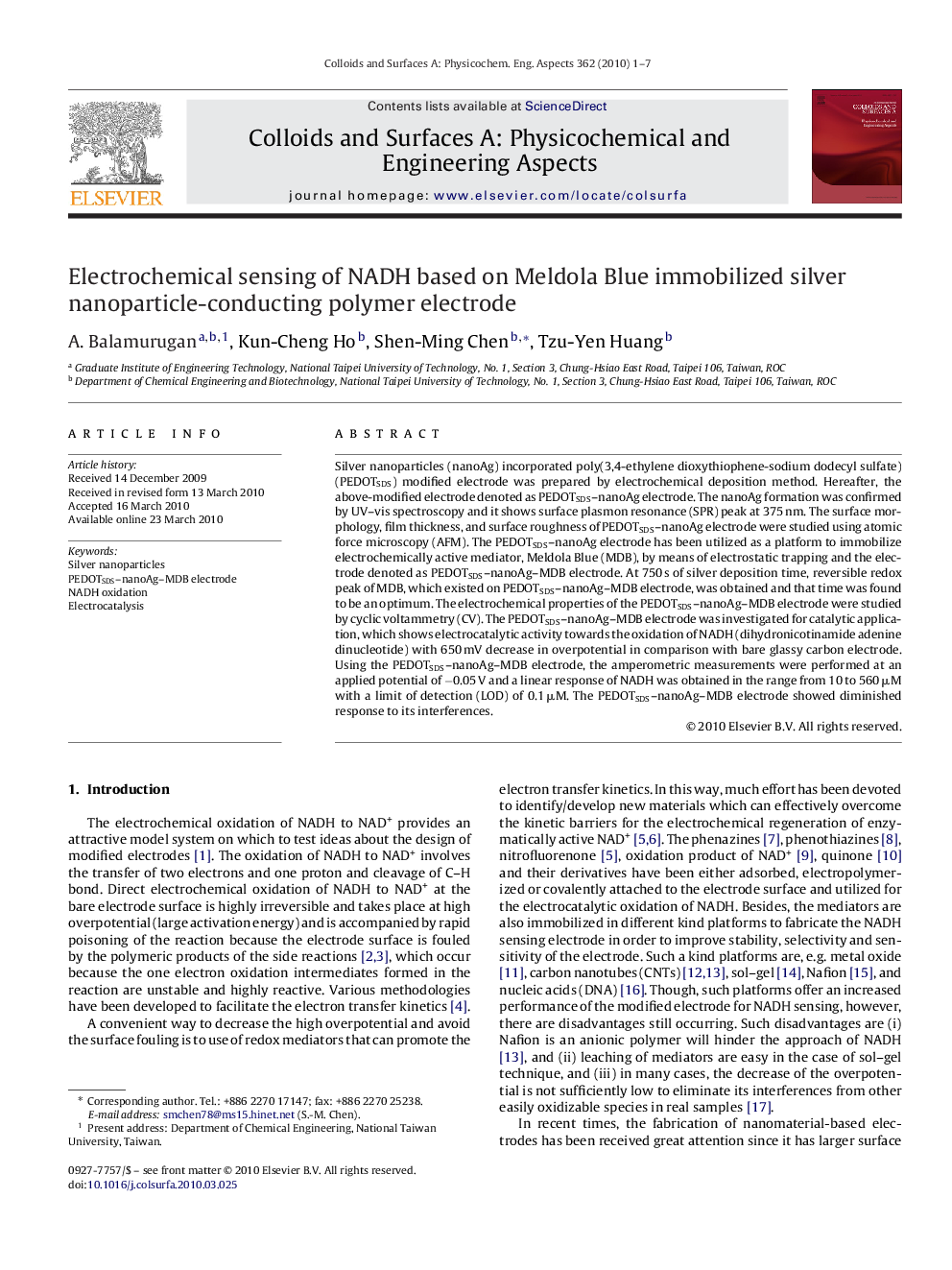| Article ID | Journal | Published Year | Pages | File Type |
|---|---|---|---|---|
| 595414 | Colloids and Surfaces A: Physicochemical and Engineering Aspects | 2010 | 7 Pages |
Silver nanoparticles (nanoAg) incorporated poly(3,4-ethylene dioxythiophene-sodium dodecyl sulfate) (PEDOTSDS) modified electrode was prepared by electrochemical deposition method. Hereafter, the above-modified electrode denoted as PEDOTSDS–nanoAg electrode. The nanoAg formation was confirmed by UV–vis spectroscopy and it shows surface plasmon resonance (SPR) peak at 375 nm. The surface morphology, film thickness, and surface roughness of PEDOTSDS–nanoAg electrode were studied using atomic force microscopy (AFM). The PEDOTSDS–nanoAg electrode has been utilized as a platform to immobilize electrochemically active mediator, Meldola Blue (MDB), by means of electrostatic trapping and the electrode denoted as PEDOTSDS–nanoAg–MDB electrode. At 750 s of silver deposition time, reversible redox peak of MDB, which existed on PEDOTSDS–nanoAg–MDB electrode, was obtained and that time was found to be an optimum. The electrochemical properties of the PEDOTSDS–nanoAg–MDB electrode were studied by cyclic voltammetry (CV). The PEDOTSDS–nanoAg–MDB electrode was investigated for catalytic application, which shows electrocatalytic activity towards the oxidation of NADH (dihydronicotinamide adenine dinucleotide) with 650 mV decrease in overpotential in comparison with bare glassy carbon electrode. Using the PEDOTSDS–nanoAg–MDB electrode, the amperometric measurements were performed at an applied potential of −0.05 V and a linear response of NADH was obtained in the range from 10 to 560 μM with a limit of detection (LOD) of 0.1 μM. The PEDOTSDS–nanoAg–MDB electrode showed diminished response to its interferences.
